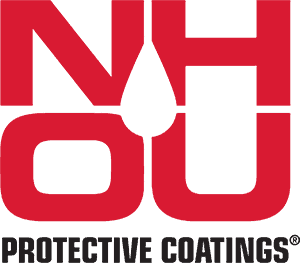Discover the Ultimate Way to Protect Your Truck from the Road Brine Rust
In many parts of the world, the winter months bring cold weather, snow, and ice. When snow and ice cover roadways, they become slippery and unsafe to travel on. In order to prevent icy roadways, mixtures of salts are often applied. These coarse salt crystals called rock salts to dissolve in snow and ice, melting ice and preventing new ice from forming.
Pure water has a freezing temperature of 0°C (32°F); as salts dissolve in water, the freezing temperature decreases, which requires colder temperatures for ice to form. The exact temperature will depend on the type of rock salt used; sodium chloride rock salt will prevent ice formation down to -9°C (15°F) while calcium chloride rock salts will prevent ice formation down to -29°C (-20°F).
The Problem With Rock Salt
Though rock salts are effective at melting ice, issues may arise during the application onto roadways. Studies have shown that after road application from a salt truck, many of the rock salt crystals get physically displaced and end up on the shoulders of roads or off the road completely.
Another issue is the need for water to be present when applying salt. As salt reacts with water, it generates heat, which aids in melting ice. Dry salt distributed onto roadways that lack a source of moisture due to low humidity conditions during winter storms is ineffective at melting ice. An alternative deicing method is prewetting the rock salt with a salt brine solution or other prewetting agents before distribution onto the roadways.
Salt brine for roads is a mixture of rock salt and water and can be comprised of one or a combination of different types of salts. In prewetting deicing treatments, the salt brine solution is mixed with dry rock salt as it is distributed onto the roadway. This prewetted rock salt adheres better to the roadways, resulting in higher roadway retention and more effective melting. Prewetting also reduces the amount of rock salt needed, greatly increasing efficiency and reducing salt costs.
A municipality using brine as a prewetting agent for road deicing contacted Hanna Instruments for a quick and easy solution for measuring the concentration of their salt brine for roads.
What is salt brine?
Salt brine is a solution of salt (typically sodium chloride) and water. It has a freezing point lower than pure water and, as such, is a useful tool in reducing the adhesion of snow and ice to road surfaces. In addition to brine made with sodium chloride, some winter maintenance agencies also use brines made with calcium chloride or magnesium chloride.
Nonetheless, these brines are solutions of salt and water, with a freezing point lower than the freezing point of pure water. The freezing point of the brine
are a function of the salt being used in the brine (sodium chloride, calcium chloride, or magnesium chloride) and the percentage by weight of that salt
in the solution.
You may agree when we say that chemicals like road brine used to keep roads safe during the winter season are both a blessing and a curse. Road brine is made using calcium chloride, magnesium chloride, or sodium chloride. Sodium chloride or rock salt is a popular choice to make road brine.
Rock salt is mixed with ice, snow, or freezing rain to create brine on the road. This technique is used to de-ice roads during the winter season—all much needed to make roads clear, thereby minimizing delays and roadside accidents. Vehicle drivers can easily spot road brine as it can be seen as white lines along the roadway.
Alarming Road Brine Statistics
Did you know that:
- Americans use more than 48 billion pounds of salt to clear the effects of winter weather on the roads every year
- Rock salt lowers the risk of collisions by nearly 85 percent
Although beneficial, road brine can cause environmental and vehicle damage. It can cause your truck’s parts to rust and corrode—inside and out. Put simply, metal and chloride don’t go well together. Even though metal has an oxide layer that protects it from rust and corrosion, chloride has the property to break down that protective layer, which results in rust.
It’s essential to understand that salt does not create rust alone; it needs moisture. In dry and cold winter conditions, when a truck is covered in salt brine and snow and then parked in a closed environment like a garage—it creates the perfect recipe for rust. The enclosed space traps humidity while the mixture slowly eats away the metal. Furthermore, the cumulative effects of time and chemical reactions make the vehicle rustier.
NH Oil Undercoating—The Ultimate Solution
Many truckers rely on car washes to remove road brine. But it doesn’t offer the best results. In fact, many car washes recycle water and end up pushing contaminated water back into the body cavities of your undercarriage making this counterproductive The ultimate way to protect your truck from road brine rust is NH Oil Undercoating. It is a unique combination of Green corrosion inhibitors and refined mineral oil. It helps:
- Guard your vehicle against corrosion and rust
- Eliminate oxygen and moisture
- Create a barrier against dirt, salt, and other pollutants
- Provide long-lasting protection to your truck
When applied, the formulation removes dirt, moisture, and other contaminants on the vehicle’s metal body. It penetrates deep inside, pushing out existing moisture and eliminating oxidation corrosion. Moreover, our NH oil undercoating also stops electrolysis and protects the metal by creating an active molecular protective film around it.
So, start protecting your vehicle from rust and corrosion today by using NH oil undercoating. Don’t wait for the rust to creep in and destroy your vehicle’s performance and visual appeal. Act now!

